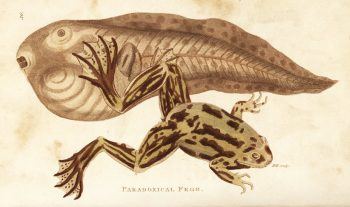Carl Zimmer in The New York Times:
 As a child growing up in the Netherlands, Hanna ten Brink spent many days lingering by a pond in her family’s garden, fascinated by metamorphosis. Tadpoles hatched from eggs in the pond and swam about, sucking tiny particles of food into their mouths. After a few weeks, the tadpoles lost their tails, sprouted legs and hopped onto land, where they could catch insects with their new tongues. Eventually Dr. ten Brink became an evolutionary biologist. Now science has brought her back to that childhood fascination. Eighty percent of all animal species experience metamorphosis — from frogs to flatfish to butterflies to jellyfish. Scientists are deeply puzzled as to how it became so common.
As a child growing up in the Netherlands, Hanna ten Brink spent many days lingering by a pond in her family’s garden, fascinated by metamorphosis. Tadpoles hatched from eggs in the pond and swam about, sucking tiny particles of food into their mouths. After a few weeks, the tadpoles lost their tails, sprouted legs and hopped onto land, where they could catch insects with their new tongues. Eventually Dr. ten Brink became an evolutionary biologist. Now science has brought her back to that childhood fascination. Eighty percent of all animal species experience metamorphosis — from frogs to flatfish to butterflies to jellyfish. Scientists are deeply puzzled as to how it became so common.
What evolutionary path could lead to a caterpillar — an admirably adapted leaf-eating machine — to tear down its body and rebuild it as a butterfly? In the May issue of American Naturalist, Dr. ten Brink, now a postdoctoral researcher at the University of Zurich, and her colleagues lay out a road map for the evolution of metamorphosis. It has appeared, they argue, as a way for a species to eat more food. The path to that feast is hard to travel, and metamorphosis has only arisen a few times in history. But once it does, the scientists also find, it rarely disappears.
More here.
